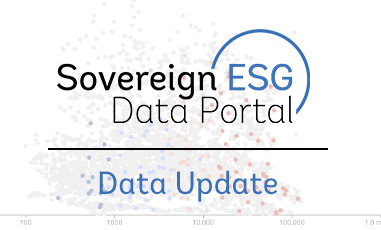 Source: Photo from Unsplash.
Source: Photo from Unsplash.
193
Indicators
65
Years
214
Economies
The World Bank curates and maintains a wide range of ESG data for policy makers, financial market participants and academic researchers. Use this portal to explore how countries compare to each other, create country profiles and learn about the latest research on ESG.
Featured items
For a full list of our featured items, see our Featured items page.
New
Blog post
Tax policy is a popular tool for governments around the world seeking to influence behavior, including for encouraging environmentally sustainable investment. But is it really an effective way to accelerate the transition to a greener economy? A Prosperity Insight Note, based on findings from a new World Bank database of Corporate Income Tax (CIT) incentives, reveals that tax incentives are rewarding polluting economic activities in more cases than they are promoting sustainability.
Read more
New
Blog post
A new capital markets issuer made its debut on the London Stock Exchange this month: The Climate Investment Funds (CIF) Capital Markets Mechanism or CCMM issued its USD500 million inaugural bond on January 22, 2025, which was six-times oversubscribed. CCMM is the first pure play climate issuer and the first multilateral climate fund to access the capital markets. This is the culmination of an 8-year journey from when the Clean Technology Fund or CTF, one of the two funds within CIF and a key multilateral sources of climate finance, explored how to operate in a more financially efficient manner.
Read more
New
Blog post
Emerging market and developing economies (EMDEs) face higher risks from climate change than advanced economies. If not addressed, these risks could threaten their stability, negatively impact economic opportunities and development outcomes, and even set back decades of work to end extreme poverty and boost prosperity in these countries.
Read more
Data deep dive
Discover the critical insights of the Finance and Prosperity Report 2024 through these compelling interactive graphs. Engage with these visualizations to explore the data, understand the trends, and gain valuable insights into the future of finance and prosperity.
Read more
Blog post
A Thai Recipe for Green Finance: What’s Cooking in the World of Sustainable Finance?
Read more
Blog post
Emerging market economies require USD 6.9 trillion to USD 7.6 trillion between 2023 and 2030 in order to achieve the Sustainable Development Goals. Additionally, intergovernmental organizations and research institutes worldwide estimate that global investments up to USD 275 trillion will be required between 2020 and 2050 to reduce greenhouse gas (GHG) emissions to net zero by 2050.
Sovereigns in emerging markets are recognizing the need for additional finance and exploring a myriad of options, including borrowing from the capital markets through dedicated sustainable financing instruments that earmark proceeds for specific types of projects. Since 2016, twenty-six emerging market (EM) sovereigns have issued green, social, and sustainability (GSS) bonds amounting to USD 125 billion, as of 30 June 2024. A key aspect of these labeled bonds is that issuers need to report the use of proceeds and the social and environmental impacts of projects and activities supported.
Read more
Get the latest data stories and updates to the portal
Subscribe to our newsletter
Data stories
For a full list of our data stories, see our Data stories page.
New
New dataset
The 2024 Changing Wealth of Nations dataset allows users to track the development of produced, human, and natural capital. Read more to see how this data can be combined with data and tools from the Sovereign ESG Data Portal to provide new insights on natural capital in Sub-Saharan Africa.
Read more
New
New dataset
“What gets measured gets managed.” But are we measuring the right things? The Changing Wealth of Nations is the most comprehensive global wealth database, including assets that underpin future well-being: produced, human, and natural capital.
Read more
Portal update
The Sovereign ESG Data Portal is updated with the most recent data in the ESG landscape. This update includes the annual income classifications update and updates to poverty headlines. Many of our 191 existing datasets have been updated to include data through 2024. Curious about the details? Read on to see what is new in this data story.
Read more
CCDR series
The CCDR series highlights priorities outlined in the Country Climate and Development Reports with a focus on sustainable financing. Viet Nam has an ambitious agenda to achieve high income status by 2045 and follow a net-zero emission path by 2050.
Read more
CCDR series
The CCDR series highlights priorities outlined in the CCDRs with a focus on sustainable financing. Brazil is uniquely equipped to harness climate action as a powerful engine for growth, unlocking the productivity increases required to transition toward high-income status.
Read more
CCDR series
The CCDR series highlights priorities outlined in the Country Climate and Development Reports and draws connections to the data offerings of the Sovereign ESG data portal.
Read more
El Salvador
El Salvador
Income classification
Upper middle income
Geographic region
Latin America & Caribbean
Climate profile
Tropical
Indicator
Value
Year
Population, total
6.34 million
2024
Population growth (annual %)
0.45%
2024
Surface area (sq. km)
21,040
2022
GDP (current US$)
35.36 billion
2024
GDP (annual % growth)
2.60%
2024
GDP per capita (current US$)
5,579.66
2024
Inflation, consumer prices (annual % growth)
0.85%
2024
Human capital index (HCI) (scale 0-1)
0.55
2020
Carbon dioxide (CO2) emissions excluding LULUCF per capita (t CO2e/capita)
1.33
2023
Latest publication
For a full list of our research, see our Publications page.
New
Policy Research Working Paper
Protecting Forests in the Congo Basin : An Empirical Basis for Performance-Linked Financing for the Republic of Congo
The Republic of Congo, a country with extensive tropical forests and low deforestation rates, needs to balance export-driven development, especially through timber production, and sustainable forest management. Despite national commitments to conserve and restore forests, such efforts remain underfunded. Empirical analysis shows that historical deforestation is closely tied to timber and agricultural export prices, the real effective exchange rate, dry weather, and demographic trends. Under a business-as-usual scenario, deforestation could rise sharply without effective policy interventions. Sangha and Likouala provinces, which are rich in undisturbed forests and new concessions, are particularly at risk. Past oil-driven revenues have contributed to lower deforestation by shifting economic focus away from land-intensive activities; however, transitioning from oil dependency requires diversification into the forest sector which in turn requires strengthening sustainable logging practices and more robust institutional frameworks. This research provides a model-based benchmark to define key performance indicators for deforestation reductions and to set feasible and ambitious targets for protecting forests while pursuing diversified economic growth. Transparent performance indicators along with feasible, but ambitious targets are a critical for results-based financing instruments. They are critical to unlock public and private capital to support economic growth and conserve the standing forests. This model has relevance to the other Congo Basin and tropical forest countries with extensive forests.
Jul 21, 2025
Full report













